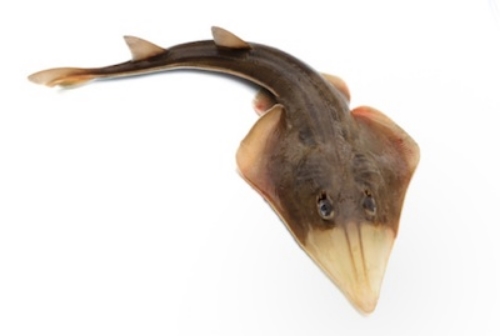Antarctic animals live where it is very cold.
Whales, seals and penguins are some of the animals that live in Antarctica.
They have ways to protect themselves from the cold.
Some leave Antarctica at the coldest time.
Antarctica is a place rich in marine life
Antarctica is the southernmost continent. © Getty Images
Antarctica is an ice covered continent. It is the southernmost continent and is where the South Pole is located. The seas around Antarctica are rich in marine (sea-living) animals, ranging from microscopic plankton to the largest animal ever to live on Earth, the blue whale.
The extremely cold water is full of animals such as Antarctic krill, a tiny shrimp-like creature. Antarctic krill live in large groups, called swarms, that can contain 10 000 - 30 000 of these finger length animals. Swarms can spread for kilometres in all directions. Krill is the main food for penguins, whales and seals.
Although very tiny, Antarctic krill are an important food for many animals. © Getty Images
Animals that live in and around Antarctica have ways of helping them survive the extreme weather conditions:
• Some, like the whales, seals and birds, have a layer of fat to insulate and protect them from the cold.
• Penguins and seals have a compact body shape and thick skin to help keep in their body heat.
Layers of fat protect whales from the extreme cold of Antarctica © Getty Images
• Birds have both waterproof feathers and downy feathers to keep them warm.
• Many of the fish and insects have special chemicals in their blood that keep them from freezing.
• Some animals leave Antarctica between June and August, its coldest months. For example, Humpback whales eat huge amounts of krill before migrating to warmer waters, where there is little krill, to give birth to their calves.
Some animals remain in Antarctica all the time, for example, the Emperor penguins.
Animals in the Antarctic include:
Sea urchins. ©Getty Images
Crustaceans
These are animals whose body is covered with a hard shell. Crustaceans are mostly sea-living animals. The Antarctic waters are very rich in crustaceans such as krill, crabs, shrimp, sea spiders, and many others.
Other marine invertebrates
Invertebrates are creatures that do not have a backbone. In Antarctic waters there are large quantities of squid, cuttlefish, octopus, marine snails, limpets, sponges, sea stars, sea squirts, sea anemones, sea urchins, jellyfish and many others.
The skate is in the same family of fish as the stingray. ©Getty Images
Insects and Arachnids (spiders, scorpions)
There are mites and other insects and arachnids including the only winged insect native to Antarctica, a midge called Parochlus steineni.
Fish
There are many fish found in Antarctic waters, such as Antarctic cod, ice fish, crocodile fish, dragon fish, robber fish, rat-tailed fish, hagfish, and skates.
Mammals
Antarctic fur seals enjoying the summer! ©Getty Images
There are seals, including the Elephant seal, Leopard seal, Weddell seal, Crabeater seal, Ross seal, and Fur seal. Whales include the blue whale, fin whale, sei whale, southern right whale, humpback whale, minke whale, sperm whale, killer whale or orca, southern bottlenose whale, blackfish, dusky dolphin, cruciger dolphin and spectacled porpoise.
Birds
The many kinds of penguins include emperor, gentoo, chinstrap, Adélie, king, macaroni and rockhopper penguins.
A black-browed albatross. ©Getty Images
Several kinds of albatross are found in Antarctica, including the lightly-maned sooty, the wandering, the grey-headed and the black- browed. There are many petrels, including the the blue, the Kerguelen, the grey, the great-winged, the white-headed, the white- chinned, the snow, the southern giant, the black-bellied storm, and the pintado.
Other birds include the dove, the Antarctic fulmar, the Antarctic cormorant, the Kerguelen cormorant, the Dominican gull, the brown skua, McCormick’s skua, the Arctic tern, the Kerguelen tern, the wattled sheathbill, the South Georgia pintail, the Kerguelen pintail, and South Georgia pipit (the only Antarctic songbird).
Emperor penguins ©Getty Images










